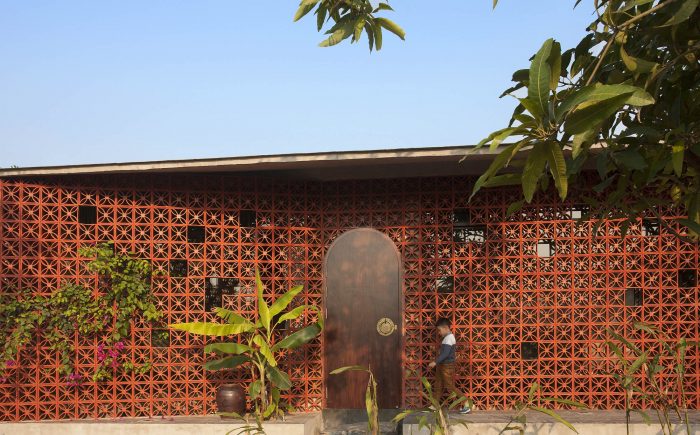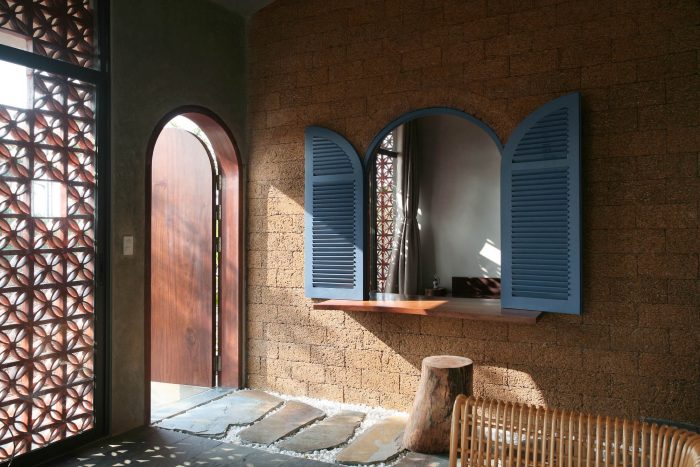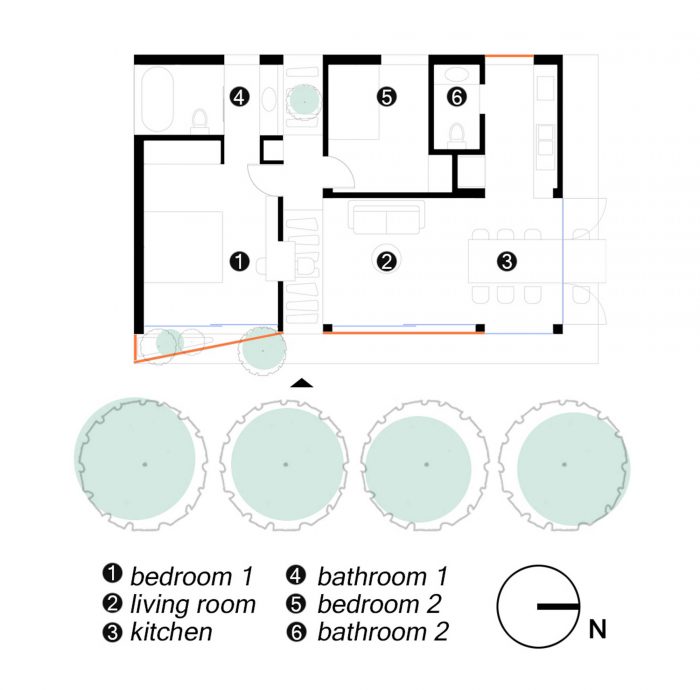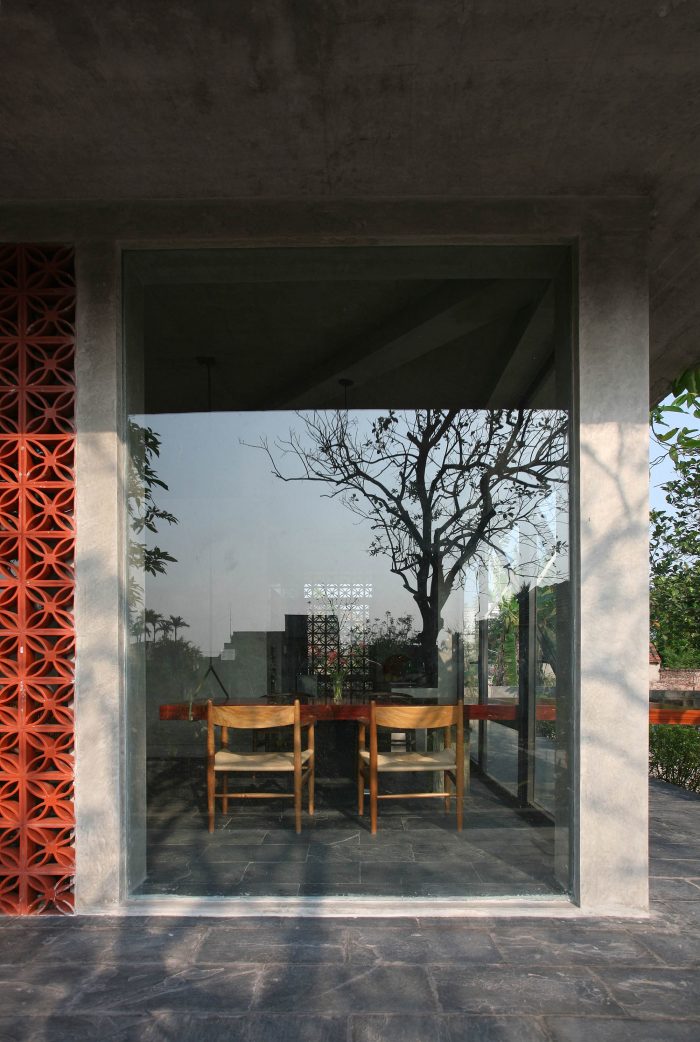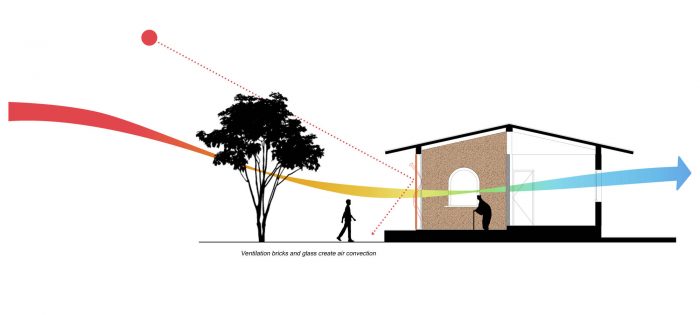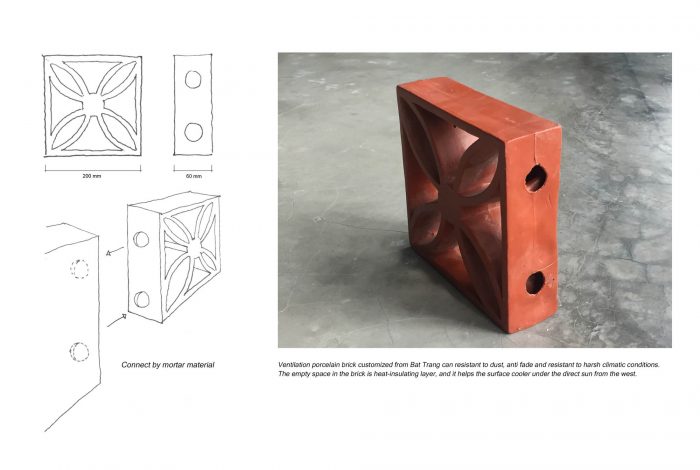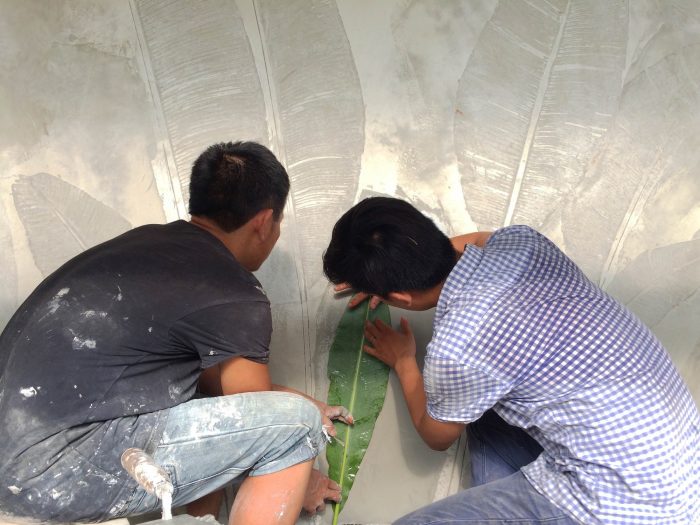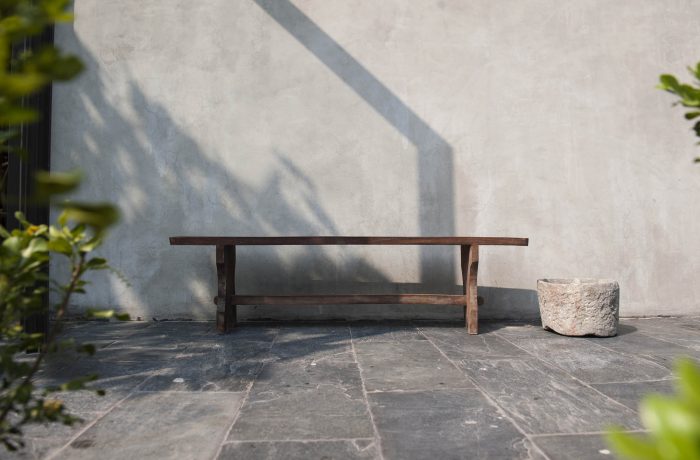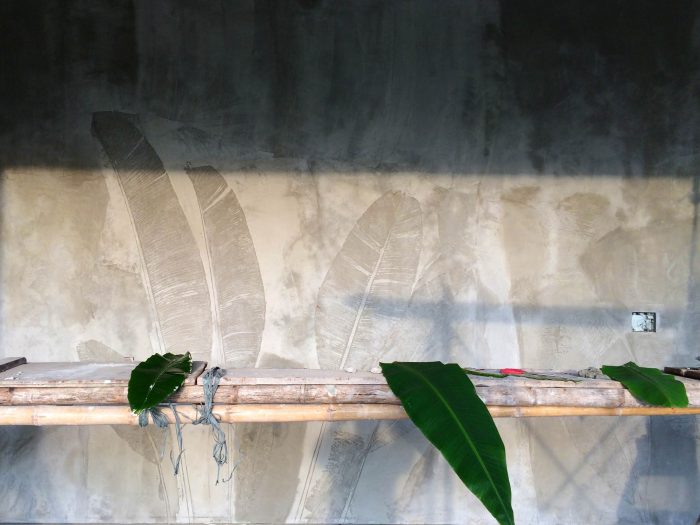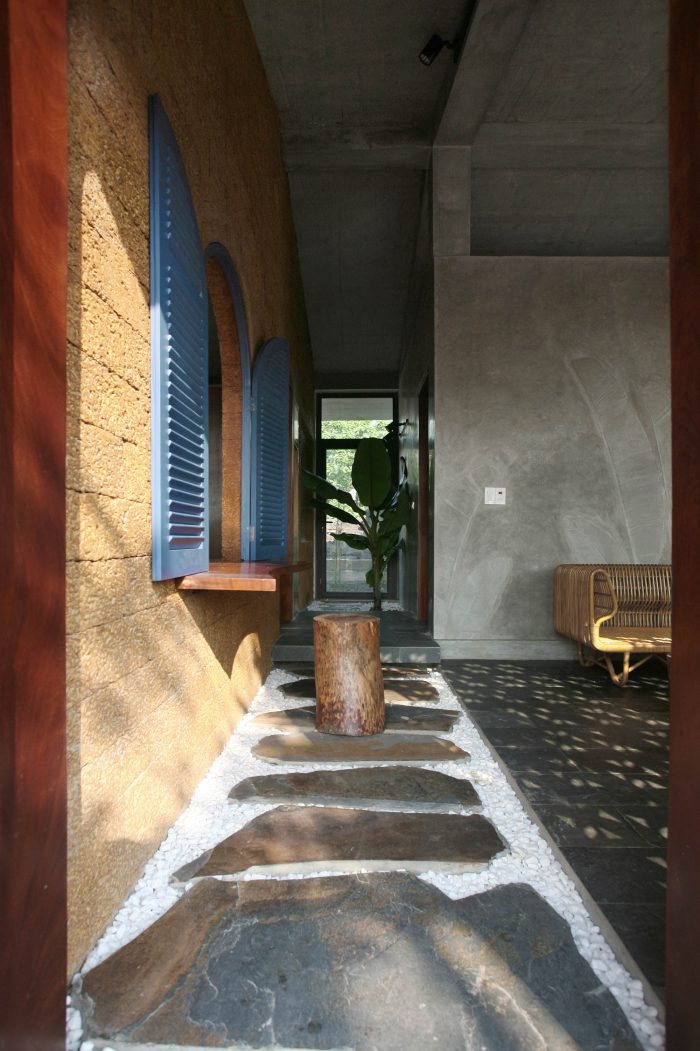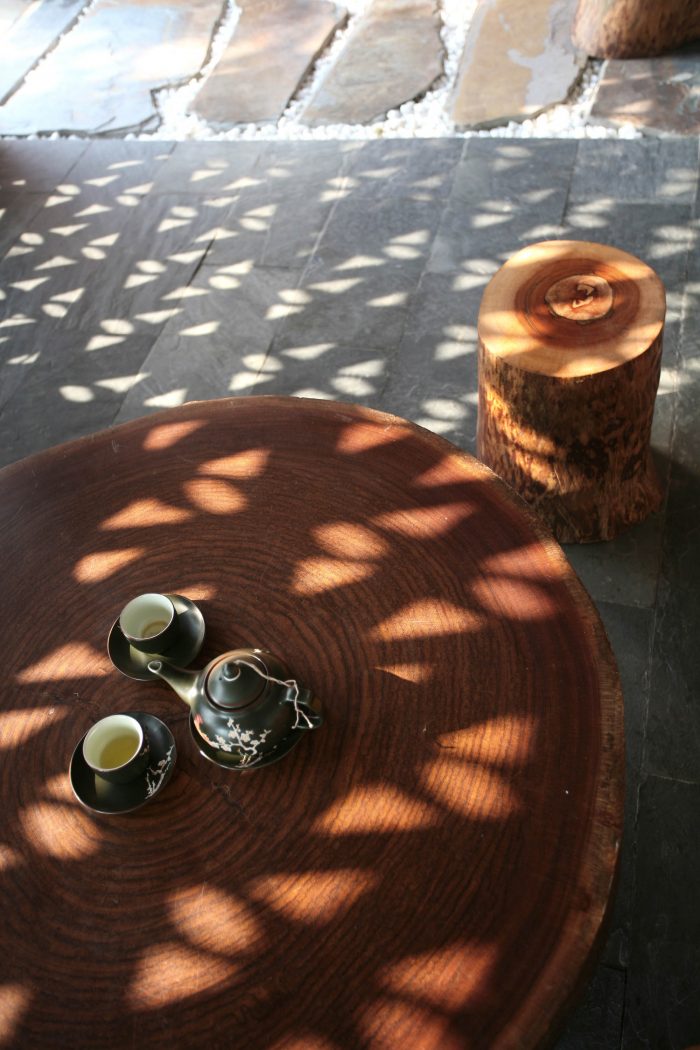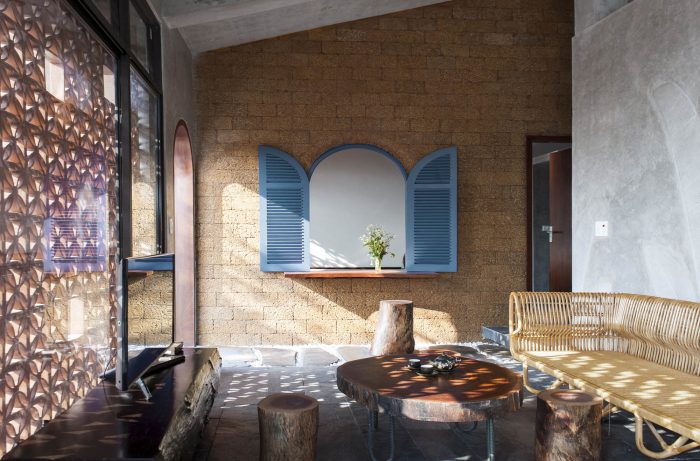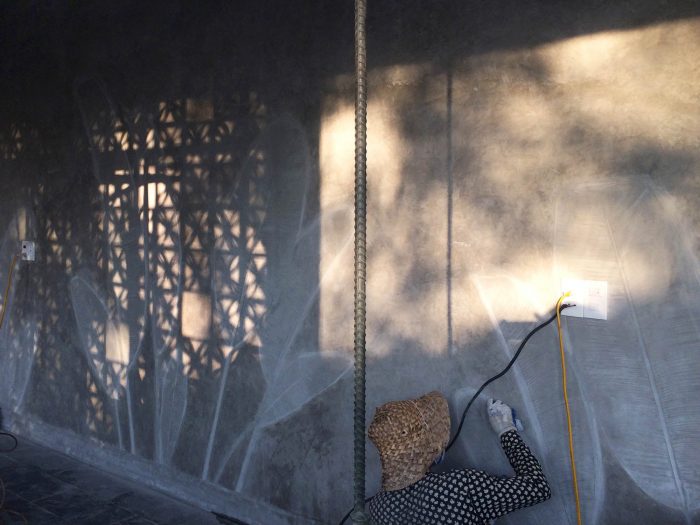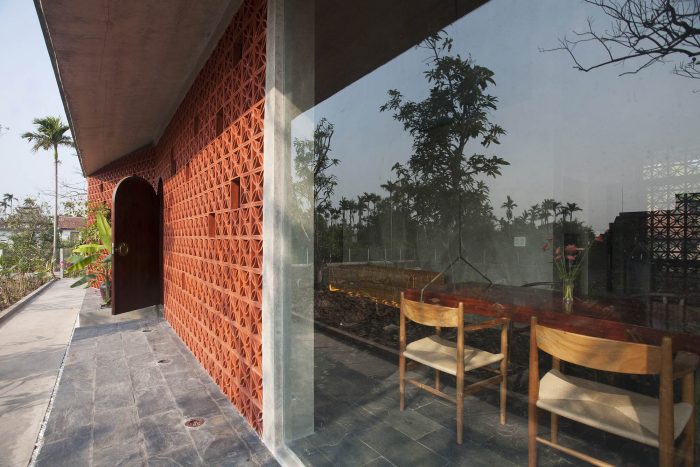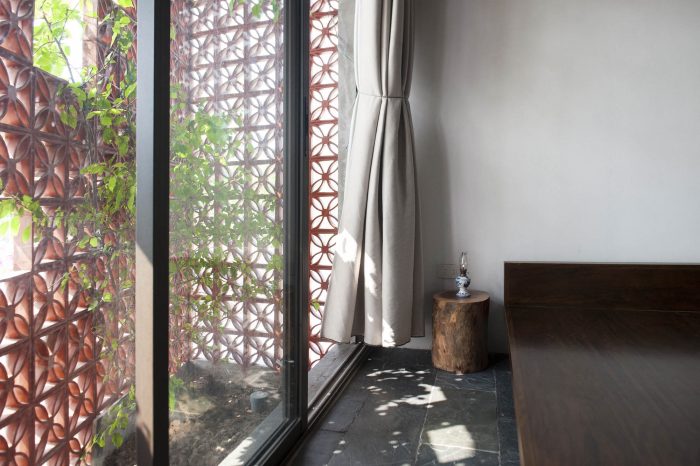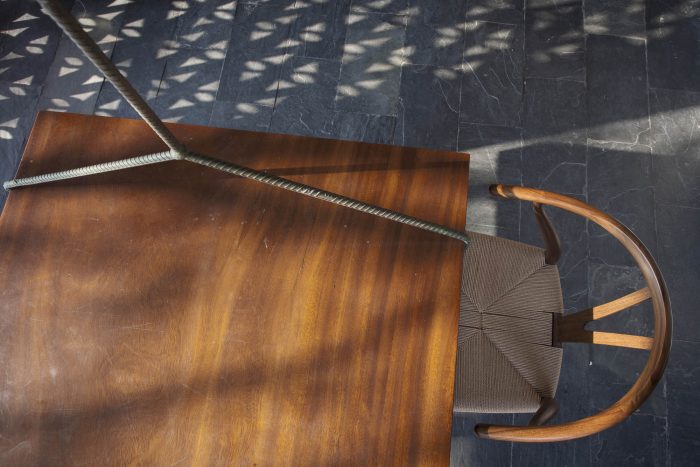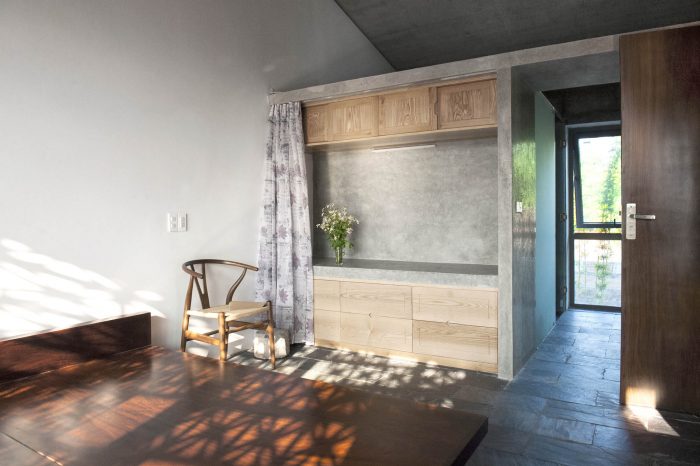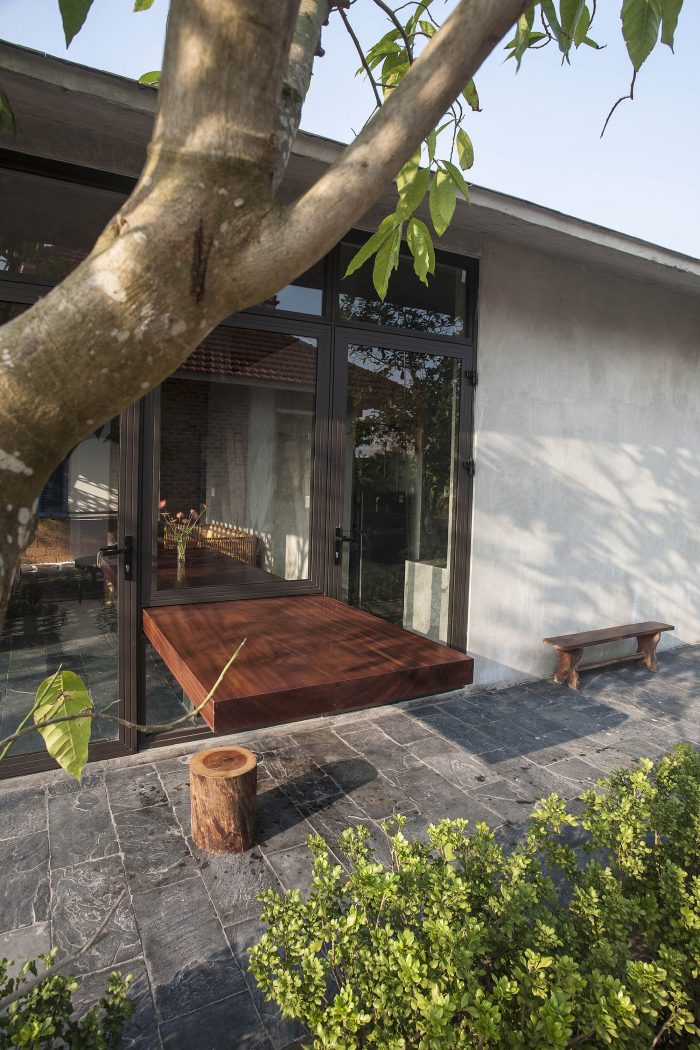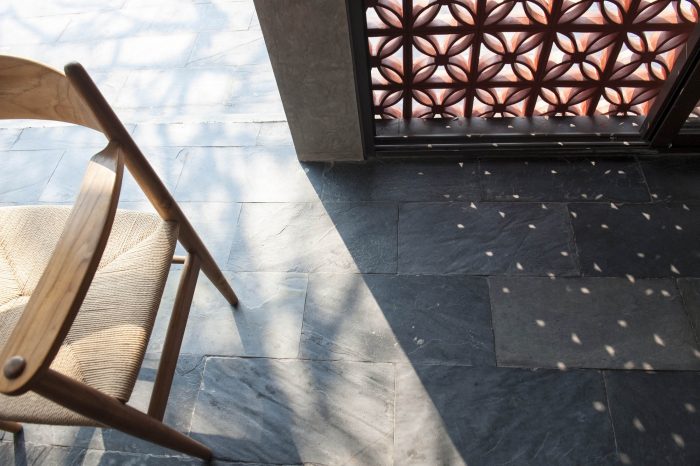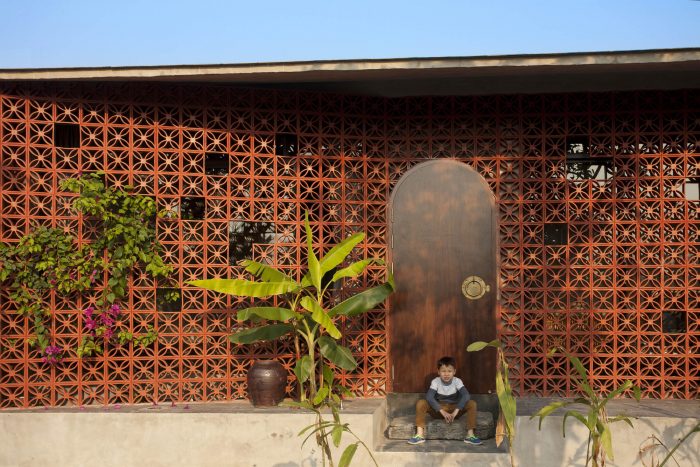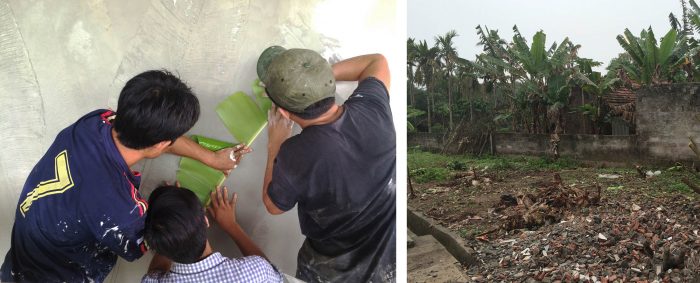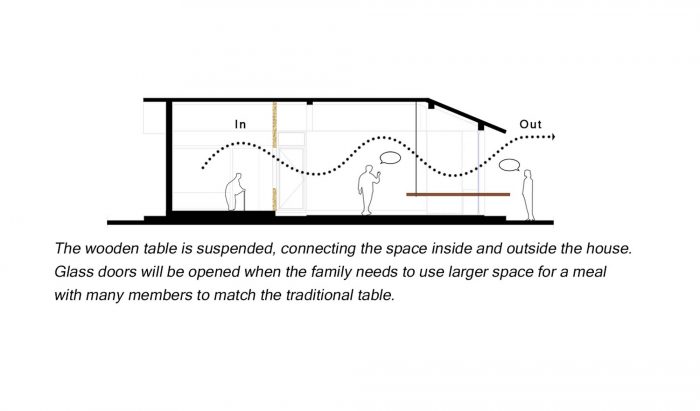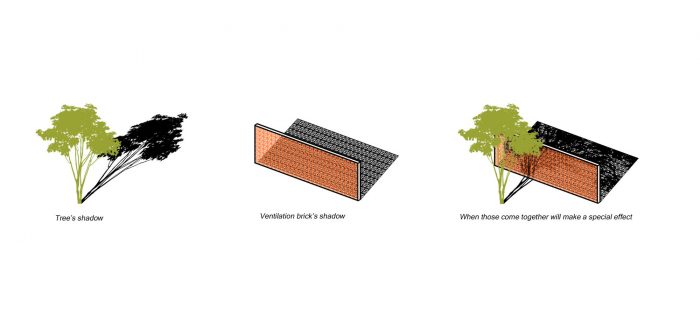Maison A的主要住户是一位年迈的母亲,她一辈子都住在沿海的南丁村。
Maison A’s main occupant is an aging mother who has lived in the coastal village of Nam Dinh her whole life.
她的儿子长大后定居在城市,父亲去世后,他想为母亲建造这所房子。这就像一个回到童年生活的地方,传统的家庭生活方式,但在现代的外观。
Her son who grew up and settled in the city wanted to build this house for his mother after after his father had died. It is like a place to return to childhood life with traditional family lifestyle but in the modern look.
当建筑师与客户交谈时,他深情地回忆起曾经生长在该地的香蕉树。这种童年的记忆激发建筑师创造一个地方,从旧的熟悉的图像有一个心理连接。
When the architect talking to the client, he remembers fondly the banana trees that used to grow at the site. This childhood memory inspires the architect to create a place which has a mental connection from old familiar images.
设计结合了南定乡村住宅的乡土气息,并对材料进行了深入的研究,以便将现代生活的舒适感带入沿海村落。每逢节假日,母亲都会招呼儿孙们来探望她,陪她一起生活。为此,房子里有多个灵活的空间,以容纳多出来的客人。
The design combines the Nam Dinh countryside housing vernacular with in-depth material research in order to bring the comfort of modern living into the coastal village. During the holidays, the mother greets her children and grandchildren who would come to visit and stay with her. For this reason, the house has multiple flexible spaces to accommodate the extra guests.
南定的沿海气候变幻莫测,该地区通常面临着大风暴。 由于这种情况,房子的外墙由3个灵活的层组成。最外层完全由Bat Trang花卉通风砖制成,以便将日光和新鲜空气引入房屋。第二层植物提供了额外的隐私,同时让投射在室内的光线与周围环境和谐地变化。 第三层表皮是坚固的玻璃层,在大风暴时,母体可以轻松地将房子封闭起来。在温暖的月份,三层皮的外立面还可以让室内空间打开,成为一个乡村的阳台。
The coastal climate of Nam Dinh is unpredictable and the area usually faces large storms. Due to this condition, the facade of the house consists of 3 flexible layers. The outermost layer is made entirely from Bat Trang floral ventilation bricks in order to bring daylight and fresh air into the house. The second layer of plants provides additional privacy while allowing the light casted indoor to change harmoniously with the surrounding environment. The third skin, a strong glass layer, allows the mother to easily close up the house during large storms. During warmer months, the triple-skin facade also allows the interior space to open up into a countryside veranda.
巴特传花通风砖是定制的,它的中空内部可以截留空气。砖中的空隙是隔热层,在西边阳光的直射下,有助于外墙的整理。
The Bat Trang floral ventilation bricks are customized to trap air in its hollow interior. The empty space in the brick is heat-insulating layer which helps the facade coller under the direct sun from the west.
朴素的工艺技术也经过现代科技的提炼,保留了传统与科学的精华。例如,家庭卧室的墙体是由特殊的红土石(称为 “蜂巢石”)–一种来自附近山西地区的天然而粗糙的材料制成。当地的石材工匠被邀请参与建造过程。他们面临的挑战是创造一堵带有拱形窗口的墙,将卧室和客厅区域连接起来。虽然 “蜂巢石 “因其粗糙和缺乏精确性,通常不被用于室内,但这里的工匠们却面临着挑战,他们要完善自己的工艺,以符合项目所要求的建筑精度。
Rustic crafting techniques are also refined with modern technology in order to reserve the bests of tradition and science. For instance, the family-bedroom wall is made from special laterite stone (called “hive stone”)-a natural yet rough material from the nearby Son Tay region. The local stone craftsmen are invited to participate in the construction process. They are challenged to create a wall with an arched window opening that would connect the bedroom to the living room area. While “hive stone” is not typically used indoor because of its roughness and lack of precision, the craftsmen here are challenged to refine their process in order to match the architectural precision that the project requires.
此外,为了将芭蕉叶的触感之美转移到混凝土表面,还采用了手工压制凹版的方法。为了达到理想的效果,设计团队与工匠紧密合作。这是概念设计的一个重要元素,因为这栋房子曾经坐落在一个小型香蕉农场上。这些家庭记忆是设计中不可或缺的一部分,让场地的历史成为居民日常生活的一部分。
In addition, a hand-pressed intaglio method is used to transfer the tactile beauty of the banana leaf onto the concrete surface. The design team works closely with the craftsmen in order to achieve the desired effect. This is an important element of the conceptual design as the house used to sit on a small banana farm. These familial memories are an integral part of the design, allowing the site’s history to become a part of the day-to-day life of its inhabitants.
Maison A将乡村传统与现代舒适深入的材料研究混合在一起,为母亲和她的归来的孩子们创造一个祖先的地方。当地材料的粗犷主义构成反映了周边文化的丰富性,而设计则将其提升到更高的境界。从这里开始,一砖一瓦都记录着家族的记忆,并代代相传。
Maison A mixes the countryside traditions with modern comfort in-depth material research to create an ancestral place for the mother and her returning children. The brutalist composition of local materials reflects the richness of the surrounding cultures while the design elevates them to higher grounds. From here, the memory of the family is recorded in each brick and passed down through generations.
建筑师:Nghia-Architect
面积:78 m²
年份:2017年
摄影作品:Tuan Nghia Nguyen
厂家:Lai Chau
国家:越南
Architects: Nghia-Architect
Area: 78 m²
Year: 2017
Photographs: Tuan Nghia Nguyen
Manufacturers: Lai Chau
Country: Vietnam


